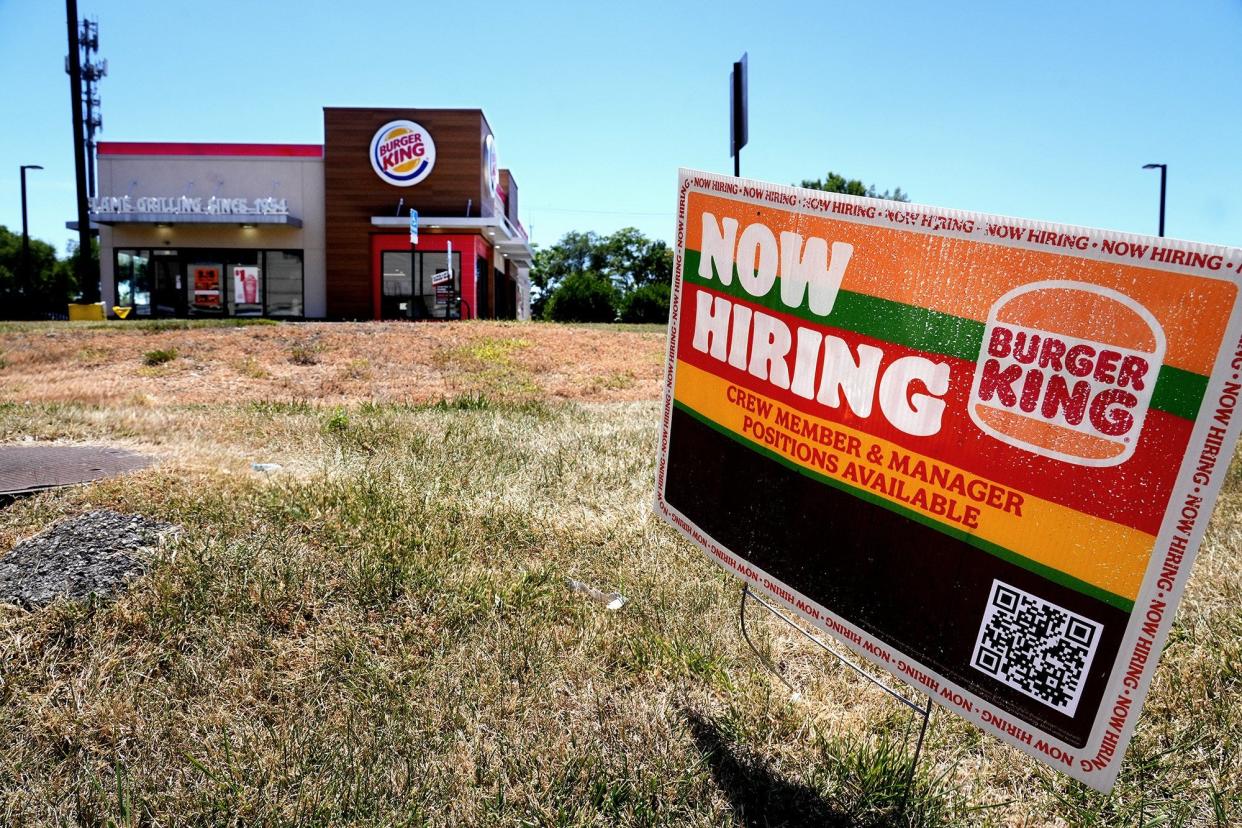Ohio unemployment remains near all-time low as recession worries climb

Ohio's unemployment rate remained near an all-time low in June even as worries climb that an economic slowdown is on the horizon.
The jobless rate was 3.9% last month, the same as in May, according to Ohio Department of Job and Family Services data released Friday.
That's the lowest rate since May 2019, nearly a year before the pandemic began, and one notch above the rate of 3.8% in 2001, the lowest rate recorded since the start of the data in 1976.
While the rate may be low, Ohio's economy continues to feel the effect of the pandemic.
Ohio needs about 145,000 jobs to get back to employment levels in February 2020. Even though the unemployment rate held steady, the state lost 11,300 jobs in June, including 5,900 government jobs and 3,600 manufacturing jobs.
June was the first month this year that the state has lost jobs. That stands in contrast to national data showing the U.S. continuing to add jobs.
The Columbus-area has been hit with several large layoffs this year, including from the health tech company Olive, Victoria's Secret, OhioHealth, and Root Insurance.
The Ohio labor force overall remains about a 100,000 workers below where it was before the pandemic started.
"Job growth stalled out in Ohio over May and June as employers contend with lack of available workers and much higher wage costs," Nationwide senior economist Ben Ayers said in a research note Friday.
"Hopefully, the sharp drop during June will be an outlier, but the trend in job gains is likely to be weaker from here as higher costs for businesses and slower consumer demand prompt cuts in spending."
The labor market likely will remain tight for now, he said.
"Until more workers enter the workforce in Ohio, employers will continue to have trouble making hires," he said.
Steve Steinour, chairman, president and CEO of Huntington Bancshares, said business customers are making large capital investments as they look for ways to use equipment or reengineer products to help deal with the labor shortage.
At the same time, businesses and consumers are facing inflation at its highest rates in decades and a slowing economy, he said.
"Inflation is out there. People feel it at the pump," he said in an interview Thursday after the bank released its second-quarter financial results.
"You can see things slowing," he said.
Still, job openings remain high and businesses and consumers remain in solid shape financially, positioning them to withstand a slowdown, he said.
"This is not one of those crisis moments where the consumer is weak," he said.
The hope is that inflation will start to come down and that there will be a resolution to at least some of the international problems that would prevent the economy from tipping into a recession, he said.
mawilliams@dispatch.com
@BizMarkWilliams
This article originally appeared on The Columbus Dispatch: Ohio still needs more jobs, workers to get back to pre-pandemic levels

